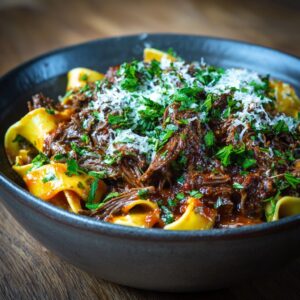If you’re craving a rich, bold, and unforgettable dish, this bison in wild boar ragu recipe is a culinary masterpiece worth savoring. Combining two premium game meats, bison and wild boar, creates a depth of flavor that’s both rustic and refined. Slow-cooked to perfection in a savory tomato and herb sauce, this ragu offers a deliciously hearty experience perfect for cozy dinners or special occasions.
What makes this recipe truly stand out is the balance between the lean, slightly sweet flavor of bison and the robust, earthy taste of wild boar. The result is a sauce that’s layered with complexity, enhanced by aromatic vegetables, wine, and fresh herbs. Each bite brings you closer to the old-world charm of traditional Italian slow cooking, where patience and quality ingredients make all the difference.
Whether you’re serving it over fresh pasta, creamy polenta, or crusty artisan bread, this bison in wild boar ragu recipe transforms a simple meal into a gourmet feast. It’s a dish that celebrates the richness of wild game while remaining approachable for home cooks. Once you try it, you may find it becoming your signature comfort food for years to come.
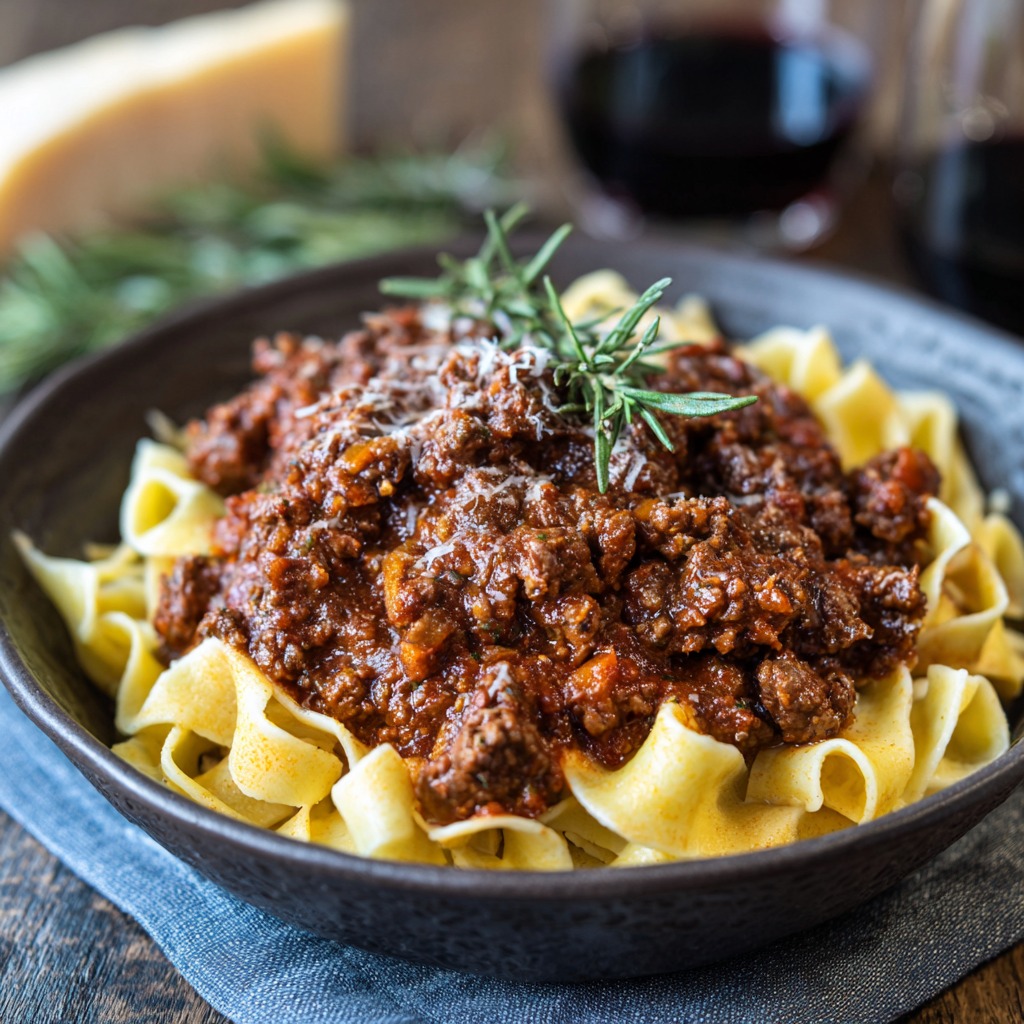
- What is Bison in Wild Boar Ragu Recipe
- Why You’ll Love This Bison in Wild Boar Ragu Recipe
- How to Make Bison in Wild Boar Ragu Recipe
- What to Serve With
- Top Tips for Perfecting Bison in Wild Boar Ragu Recipe
- Storing and Reheating Tips
- Health Benefits of Bison in Wild Boar Ragu Recipe
- Conclusion
- 💡 Share Your Twist!
What is Bison in Wild Boar Ragu Recipe
The bison in wild boar ragu recipe is a gourmet twist on a classic Italian ragu, made by slow-cooking two types of premium game meats—bison and wild boar—in a rich tomato-based sauce with wine, herbs, and aromatics.
Instead of the more common beef or pork, this version uses bison, which is lean, slightly sweet, and tender, paired with wild boar, known for its deep, earthy, and subtly nutty flavor. The meats are typically seared first to lock in flavor, then simmered for hours with ingredients like onions, carrots, celery, garlic, crushed tomatoes, red wine, and fresh herbs such as rosemary and thyme.
The result is a luxurious, hearty sauce that’s perfect for serving over pasta, creamy polenta, or rustic bread. This recipe highlights the unique taste of wild game while preserving the comforting essence of a traditional ragu. It’s ideal for adventurous cooks and anyone looking to elevate a cozy dinner into something truly special.
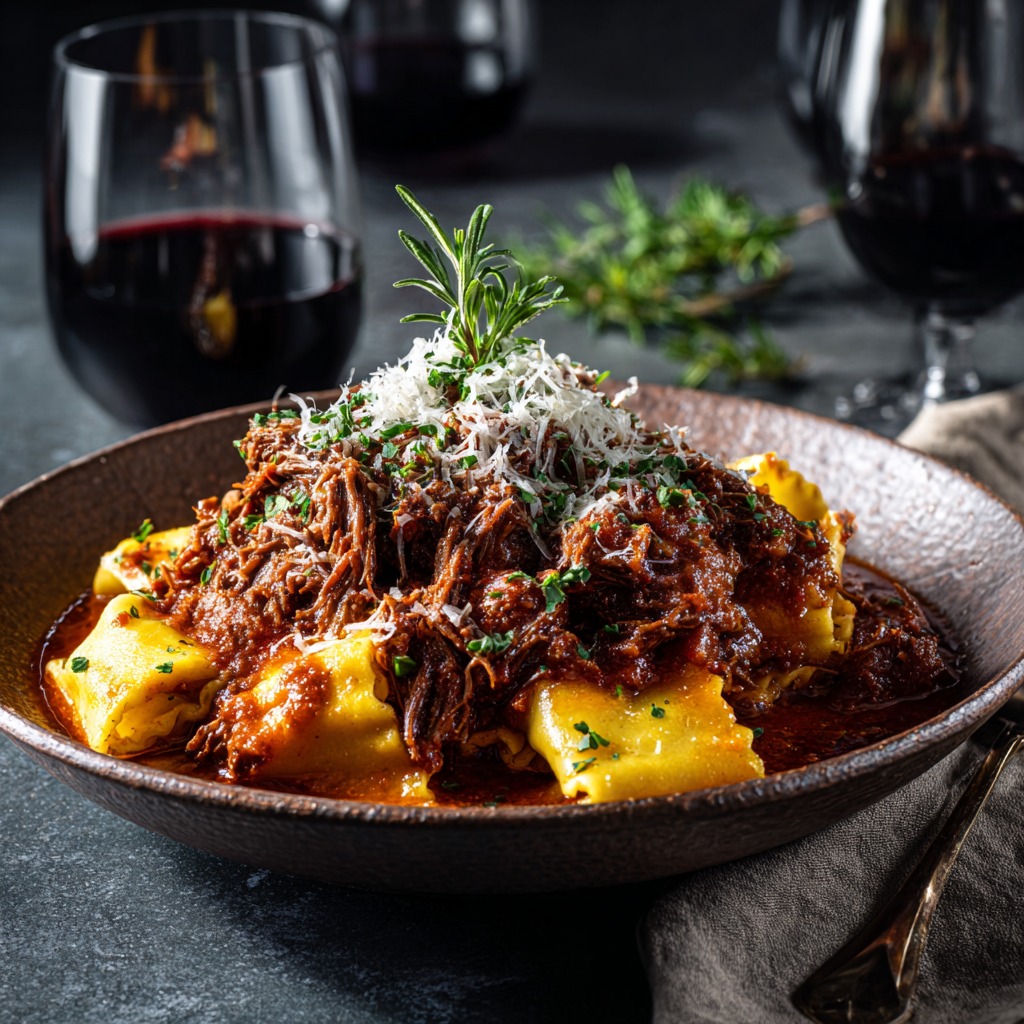
Why You’ll Love This Bison in Wild Boar Ragu Recipe
Special Yet Approachable – Ideal for both family dinners and special occasions without being complicated.
Rich, Bold Flavor – Bison brings a mild sweetness while wild boar adds a deep, earthy taste, making the sauce truly unique.
Comfort in Every Bite – Slow-cooked to perfection, it’s warm, filling, and perfect for cold days or cozy nights.
Easy to Impress – Looks and tastes like a restaurant-quality meal but is simple enough for home cooking.
Perfect for Any Base – Delicious over fresh pasta, creamy polenta, or crusty bread.
Main Highlights
Perfect for Special Meals – Ideal for celebrations, romantic dinners, or cozy nights in.
Unique Game Meat Blend – Combines lean, slightly sweet bison with rich, earthy wild boar.
Slow-Cooked Perfection – Long simmering time builds deep, layered flavors.
Gourmet Yet Simple – Impressive taste without overly complex steps.
Versatile Serving Options – Pairs beautifully with pasta, polenta, or crusty bread.
Cost-Saving Benefits
| Cost-Saving Benefit | How It Helps |
|---|---|
| Buy in Bulk | Purchasing bison and wild boar in larger portions often reduces price per pound. |
| Use Frozen Meat | Frozen game meat is usually cheaper than fresh and still holds great flavor. |
| Seasonal Discounts | Watch for sales during hunting season or local farmer promotions. |
| Stretch with Pasta or Polenta | Serving with hearty bases makes smaller portions of meat go further. |
| Batch Cooking | Make a large batch and freeze portions to save time and money later. |
Flavorful Toppings and Customizations
Fresh Herbs – Sprinkle parsley, basil, or thyme for a burst of freshness.
Grated Cheese – Parmesan, Pecorino Romano, or aged Asiago add salty richness.
Chili Flakes – For a gentle kick of heat.
Truffle Oil – Drizzle lightly for a gourmet touch.
Garlic Breadcrumbs – Adds crunch and extra flavor when sprinkled over pasta or polenta.
Extra Veggies – Stir in sautéed mushrooms, roasted peppers, or spinach for added texture.
Wine Finish – A splash of red wine before serving deepens flavor.
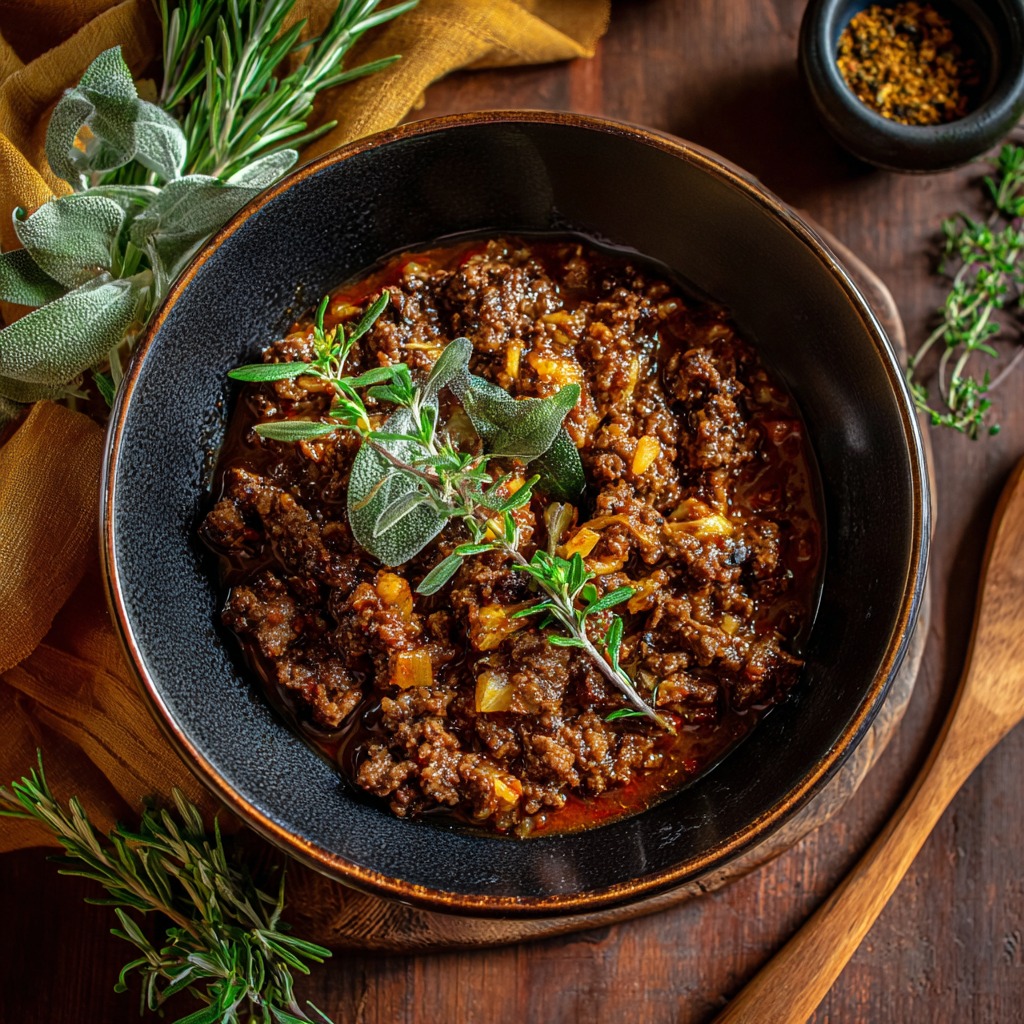
How to Make Bison in Wild Boar Ragu Recipe
This bison in wild boar ragu recipe is a hearty Italian-style dish made by slow cooking lean bison and rich wild boar to create deep, layered flavors. With about twenty minutes of preparation and two to three hours of gentle simmering, it serves four to six people and pairs perfectly with pasta, creamy polenta, or crusty bread. The flavor profile is rich, savory, slightly sweet, and earthy, making it an impressive yet comforting meal for any occasion.
Key Ingredients
Bison meat – lean and slightly sweet flavor
Wild boar meat – rich and earthy taste
Onions – aromatic base for the sauce
Carrots – add natural sweetness
Celery – adds depth and balance
Garlic – for warmth and aroma
Crushed tomatoes – rich sauce foundation
Red wine – adds complexity and depth
Fresh rosemary – fragrant herb note
Fresh thyme – earthy herbal flavor
Parsley – fresh finishing touch
Olive oil – for sautéing and richness
Salt – enhances overall flavor
Black pepper – balances the taste
Table Ingredient
| Ingredient | Purpose in Recipe |
|---|---|
| Bison meat | Lean, slightly sweet flavor base |
| Wild boar meat | Rich, earthy taste for depth |
| Onions | Aromatic base for the sauce |
| Carrots | Natural sweetness to balance acidity |
| Celery | Adds depth and savory undertones |
| Garlic | Warm, aromatic flavor |
| Crushed tomatoes | Rich, hearty sauce foundation |
| Red wine | Adds complexity and richness |
| Fresh rosemary | Fragrant herbal notes |
| Fresh thyme | Earthy, aromatic depth |
| Parsley | Fresh finishing touch |
| Olive oil | For sautéing and binding flavors |
| Salt | Enhances all flavors |
| Black pepper | Balances taste with mild spice |
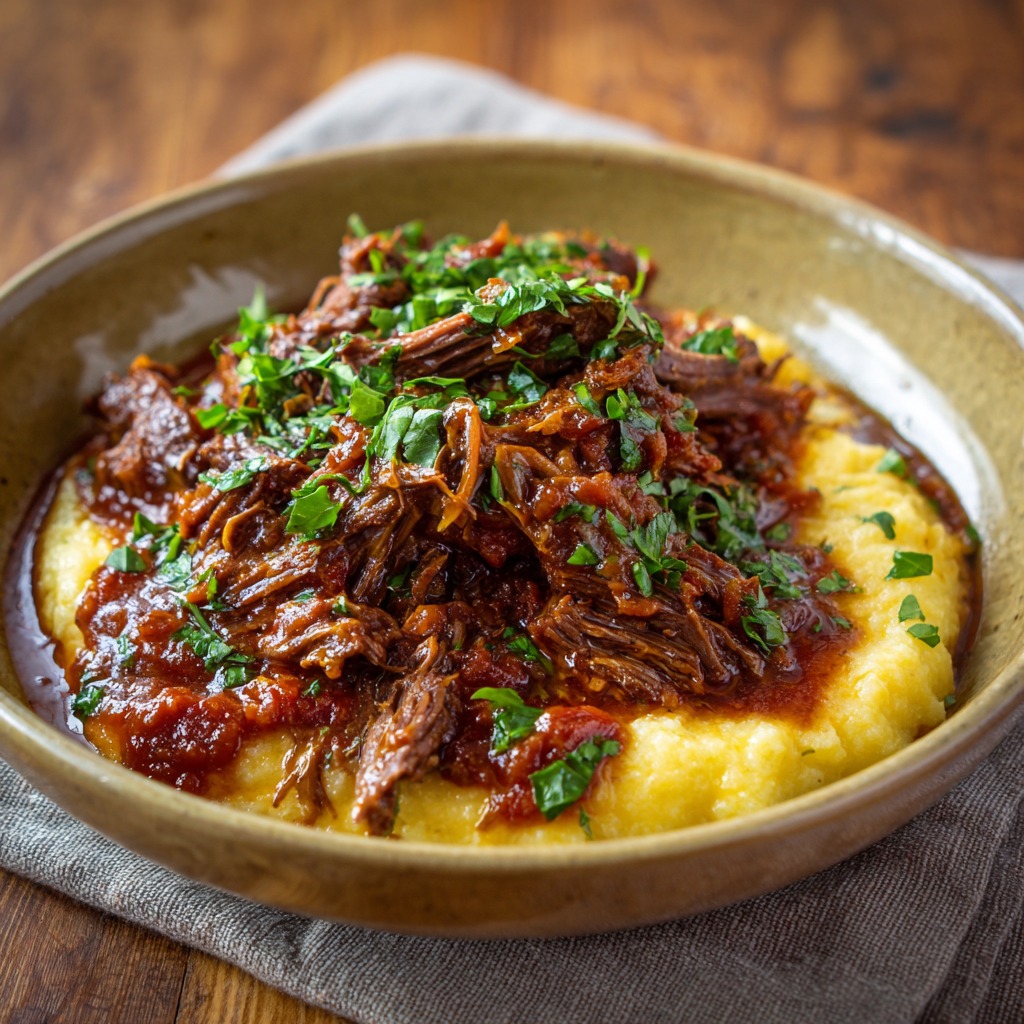
Step-by-Step Instructions
Serve and Enjoy
Spoon the ragu over pasta, creamy polenta, or alongside crusty bread.
Prepare the Ingredients
Dice the onions, carrots, and celery. Mince the garlic. Cut the bison and wild boar into small bite-sized pieces if not pre-cut.
Sear the Meats
Heat olive oil in a large pot over medium-high heat. Add the bison and wild boar, searing until browned on all sides. Remove and set aside.
Cook the Aromatics
In the same pot, add onions, carrots, and celery. Sauté for 5–7 minutes until softened. Add garlic and cook for another 1–2 minutes.
Deglaze with Wine
Pour in the red wine, stirring to scrape up any browned bits from the bottom of the pot. Let it simmer for 2–3 minutes to reduce slightly.
Build the Sauce
Return the meats to the pot. Add crushed tomatoes, rosemary, thyme, salt, and pepper. Stir well to combine.
Slow Cook the Ragu
Reduce heat to low. Cover partially and simmer gently for 2–3 hours, stirring occasionally, until the meat is tender and the sauce is rich.
Adjust and Finish
Taste the sauce and adjust seasoning if needed. Remove rosemary and thyme stems. Stir in chopped parsley before serving.
What to Serve With
This bison in wild boar ragu pairs beautifully with a variety of sides that soak up its rich, savory sauce. Fresh pasta such as pappardelle, tagliatelle, or fettuccine is a classic choice, allowing the ragu to cling to every strand. Creamy polenta offers a smooth, comforting base that complements the deep flavors of the meat. Crusty artisan bread is perfect for mopping up the sauce, while roasted vegetables such as carrots, zucchini, or Brussels sprouts add a fresh contrast. For a lighter option, serve alongside a crisp green salad dressed with olive oil and lemon to balance the richness of the dish.
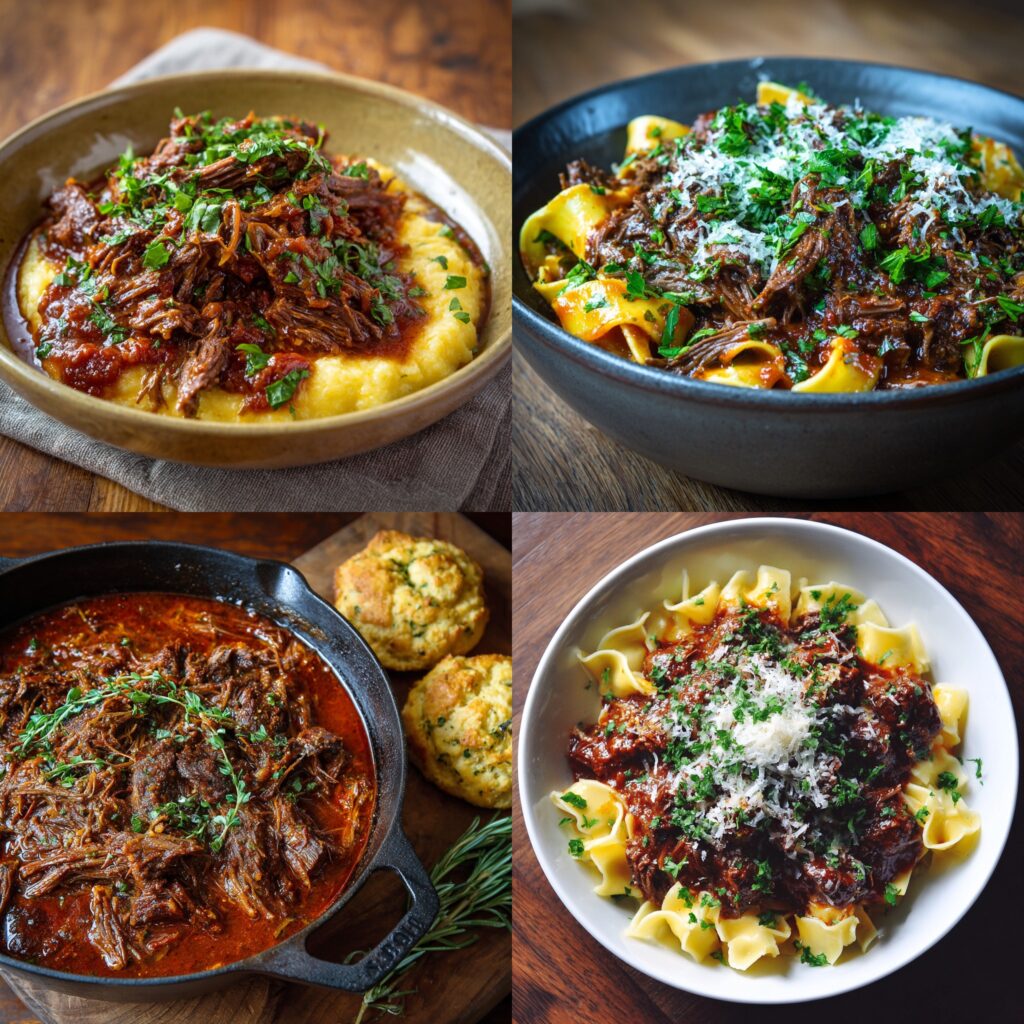
Top Tips for Perfecting Bison in Wild Boar Ragu Recipe
Pair with the Right Base – Serve over pasta, polenta, or bread that can hold up to the hearty sauce.
Choose Quality Meat – Use fresh or well-frozen bison and wild boar for the best flavor and texture.
Brown the Meat Well – Searing on high heat develops a deep, savory base for the sauce.
Use Low and Slow Cooking – Gentle simmering for several hours ensures tender meat and a rich sauce.
Don’t Skip the Wine – A splash of red wine adds depth and enhances the natural flavors of the game meats.
Balance the Acidity – If the sauce tastes too sharp, add a pinch of sugar or a drizzle of cream.
Fresh Herbs Make a Difference – Use fresh rosemary, thyme, and parsley for vibrant flavor.
Let It Rest – Allow the ragu to sit for 10–15 minutes before serving to let the flavors meld.
Ingredient Substitutions
- Bison meat → Use lean beef, venison, or elk for a similar texture and mild flavor.
- Wild boar meat → Substitute with pork shoulder, pork belly, or lamb for rich, earthy notes.
- Crushed tomatoes → Use tomato passata, diced canned tomatoes, or fresh peeled tomatoes.
- Red wine → Replace with beef broth or pomegranate juice for a non-alcoholic option.
- Fresh rosemary and thyme → Use dried herbs, but reduce the amount by half to avoid overpowering the dish.
- Olive oil → Swap with avocado oil, sunflower oil, or butter for cooking.
- Parsley → Replace with fresh basil, chives, or oregano for a different herbal finish.
Timing Adjustments
If you’re short on time, you can cut the cooking period to about 1 hour by simmering the ragu over medium heat, though the flavors will be less developed. For a richer and more tender result, aim for the full 2–3 hours of slow cooking on low heat. Using a pressure cooker can reduce the total cooking time to around 45 minutes while still giving you a flavorful sauce. If preparing ahead, you can make the ragu a day in advance—its flavor deepens as it rests in the refrigerator overnight.
Common Mistakes to Avoid
Using Too Much Liquid – Adding excessive broth or water can make the sauce thin and bland.
Not Browning the Meat – Skipping a proper sear means losing the deep, savory flavor that builds the base of the ragu.
Cooking on High Heat – Rapid boiling can make the meat tough instead of tender. Stick to a low, slow simmer.
Overloading with Herbs – Too many herbs can overpower the natural taste of bison and wild boar.
Skipping the Wine or Acid – Wine or a small splash of vinegar balances richness and brightens the sauce.
Not Seasoning in Layers – Season the meat, the vegetables, and the sauce separately to develop balanced flavor.
Rushing the Cooking Time – This recipe needs time for flavors to meld and the meat to become tender.
Storing and Reheating Tips
Storing in the Refrigerator
Let the ragu cool completely before storing to prevent condensation, which can water down the sauce. Transfer to an airtight container or sealable glass jar. Store in the refrigerator for up to 4 days. This resting time can actually enhance the flavor as the sauce continues to develop.
Freezing for Long-Term Storage
For longer storage, portion the ragu into freezer-safe containers or heavy-duty freezer bags. Flatten bags for easier stacking and quicker thawing. Label each container with the date for reference. The ragu will keep well in the freezer for up to 3 months without losing flavor quality.
Reheating from the Refrigerator
Place the ragu in a saucepan over low to medium heat, stirring occasionally to avoid sticking. If the sauce is too thick, add a small amount of broth, water, or wine to loosen it without altering the flavor.
Reheating from Frozen
For best results, thaw frozen ragu overnight in the refrigerator before reheating. If you need it faster, place the sealed container in a bowl of cold water until softened, then transfer to a pan to warm. Avoid reheating on high heat, as it can cause the meat to toughen.
Microwave Reheating
If using a microwave, place the ragu in a microwave-safe dish, cover loosely, and heat in short intervals, stirring between each to ensure even warming. Add a little liquid if the sauce thickens too much.
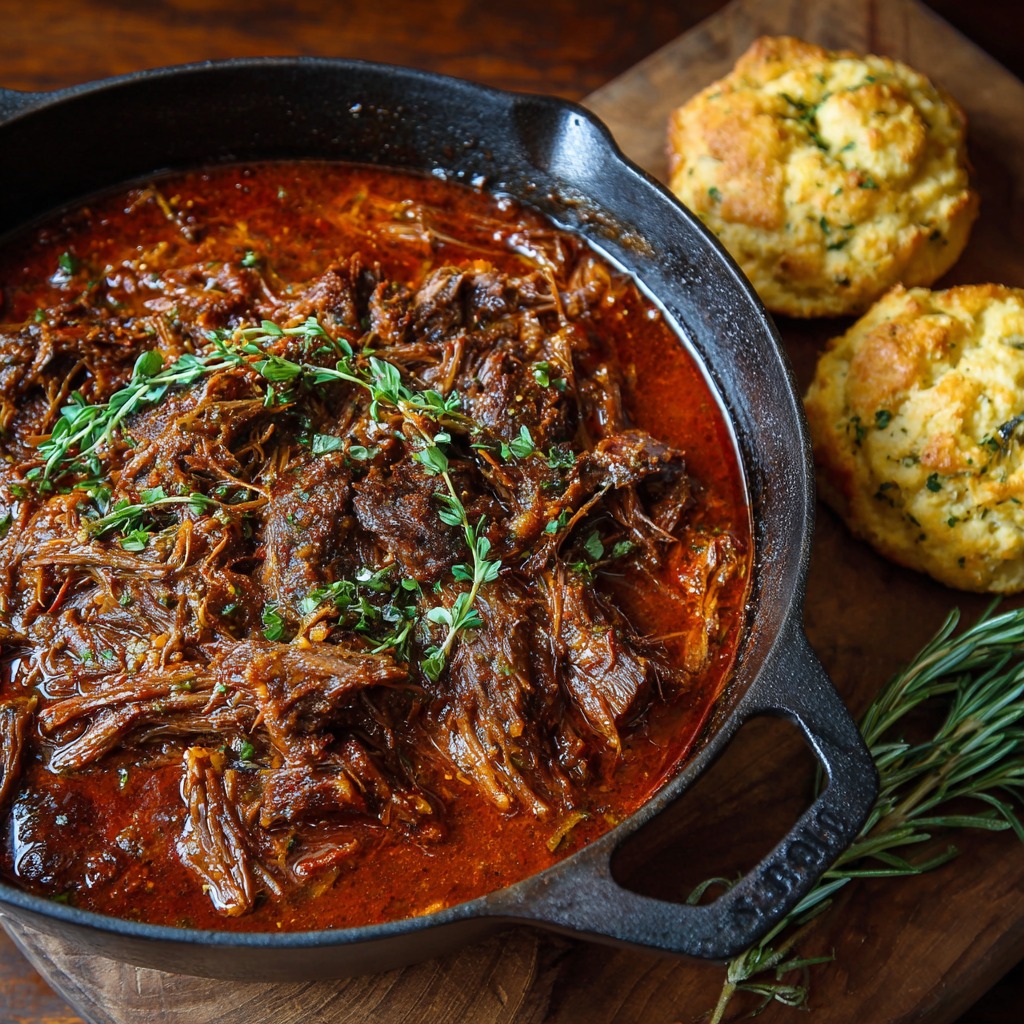
Health Benefits of Bison in Wild Boar Ragu Recipe
| Health Benefit | How It Helps |
|---|---|
| High Protein Content | Supports muscle growth, repair, and overall energy levels. |
| Leaner Than Beef | Both bison and wild boar have lower fat content compared to traditional beef. |
| Rich in Iron | Helps improve oxygen transport and reduces the risk of anemia. |
| Good Source of Zinc | Boosts immune system function and aids in wound healing. |
| Packed with B Vitamins | Supports brain function, metabolism, and energy production. |
| Contains Healthy Omega-3 Fats | May reduce inflammation and support heart health. |
| Naturally Lower in Cholesterol | A heart-friendly option compared to fattier red meats. |
Why These Ingredients Are Good for You
Bison is a lean source of high-quality protein that helps build and repair muscles while being lower in fat and calories than most beef cuts. It’s also rich in iron, which supports healthy blood circulation, and packed with B vitamins for energy production and brain function. Wild boar offers a similar nutritional profile, providing a deep, savory flavor with less saturated fat than traditional pork, plus a good dose of zinc to strengthen the immune system.
The fresh vegetables; onions, carrots, and celery, are not only flavorful but also provide vitamins, minerals, and antioxidants that promote overall health. Garlic is known for its natural anti-inflammatory and immune-boosting properties, while tomatoes deliver lycopene, a powerful antioxidant that supports heart health. Fresh herbs like rosemary, thyme, and parsley bring aromatic depth along with anti-inflammatory and digestive benefits, making this ragu both delicious and nourishing.
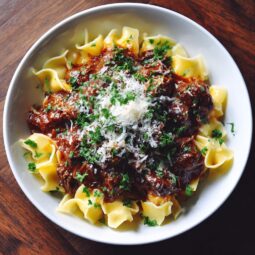
Bison in Wild Boar Ragu Recipe
Equipment
- Large heavy-bottomed pot or Dutch oven
- Wooden spoon
- Chef’s knife
- Cutting board
- Measuring cups and spoons
- Ladle
Ingredients
- 1 lb 450 g ground bison
- 1 lb 450 g ground wild boar
- 3 tbsp olive oil
- 1 large onion finely chopped
- 2 carrots finely diced
- 2 celery stalks finely diced
- 4 cloves garlic minced
- 1 cup 240 ml dry red wine
- 28 oz 800 g crushed tomatoes
- 2 tbsp tomato paste
- 1 cup 240 ml beef broth
- 2 tsp dried oregano
- 1 tsp dried thyme
- 2 bay leaves
- Salt and black pepper to taste
- Fresh parsley for garnish
Instructions
- Prepare the base – Heat olive oil in a large Dutch oven over medium heat. Add onion, carrot, and celery; cook for 5–7 minutes until softened.
- Brown the meat – Add ground bison and wild boar. Cook, stirring occasionally, until browned all over.
- Add aromatics – Stir in garlic and cook for 1 minute until fragrant.
- Deglaze – Pour in red wine, scraping up any browned bits from the bottom of the pot. Let it simmer for 3–4 minutes.
- Build the sauce – Add crushed tomatoes, tomato paste, beef broth, oregano, thyme, and bay leaves. Stir well.
- Simmer – Reduce heat to low, cover partially, and simmer for 1.5–2 hours, stirring occasionally.
- Adjust seasoning – Remove bay leaves, taste, and season with salt and pepper as needed.
- Serve – Spoon the ragu over pasta, polenta, or crusty bread. Garnish with fresh parsley.

Notes
- For extra richness, add a splash of cream or a knob of butter before serving.
- This ragu tastes even better the next day as the flavors develop overnight.
- You can substitute wild boar with pork if needed, but the flavor will be less gamey.

Conclusion
Incorporating bison in wild boar ragu recipe into your cooking repertoire is more than just an adventurous culinary choice—it’s a celebration of rich flavors, sustainable sourcing, and nutritional excellence. The combination of bison’s lean, earthy profile and wild boar’s deep, gamey notes creates a ragu that’s hearty yet refined, perfect for impressing guests or treating yourself to a gourmet experience at home. Every bite delivers a depth of flavor that showcases the beauty of wild game meats in traditional Italian-inspired cuisine.
Beyond taste, this dish offers a wealth of health benefits thanks to its protein-rich, nutrient-dense ingredients. Bison is naturally lower in fat and higher in iron compared to beef, while wild boar brings in healthy fats, essential vitamins, and unique antioxidants. When paired with fresh herbs, vegetables, and a slow-simmered tomato base, the result is a wholesome, comforting meal that nourishes both body and soul.
Whether you serve it over fresh pappardelle, creamy polenta, or even zucchini noodles for a lighter twist, bison in wild boar ragu recipe is a versatile dish that adapts to various dining styles and occasions. Its rich history, bold flavors, and impressive health profile make it a recipe worth revisiting time and again. So gather your ingredients, take your time with the slow simmer, and enjoy a rustic yet elegant plate that connects tradition with modern culinary flair.
💡 Share Your Twist!
Have you tried adding your own special touch to this bison in wild boar ragu recipe? Maybe you swapped in fresh garden herbs, used a different type of pasta, or added a splash of your favorite wine for extra depth. We’d love to hear your creative variations! Drop your twist in the comments below and inspire other food lovers to make this dish uniquely their own.
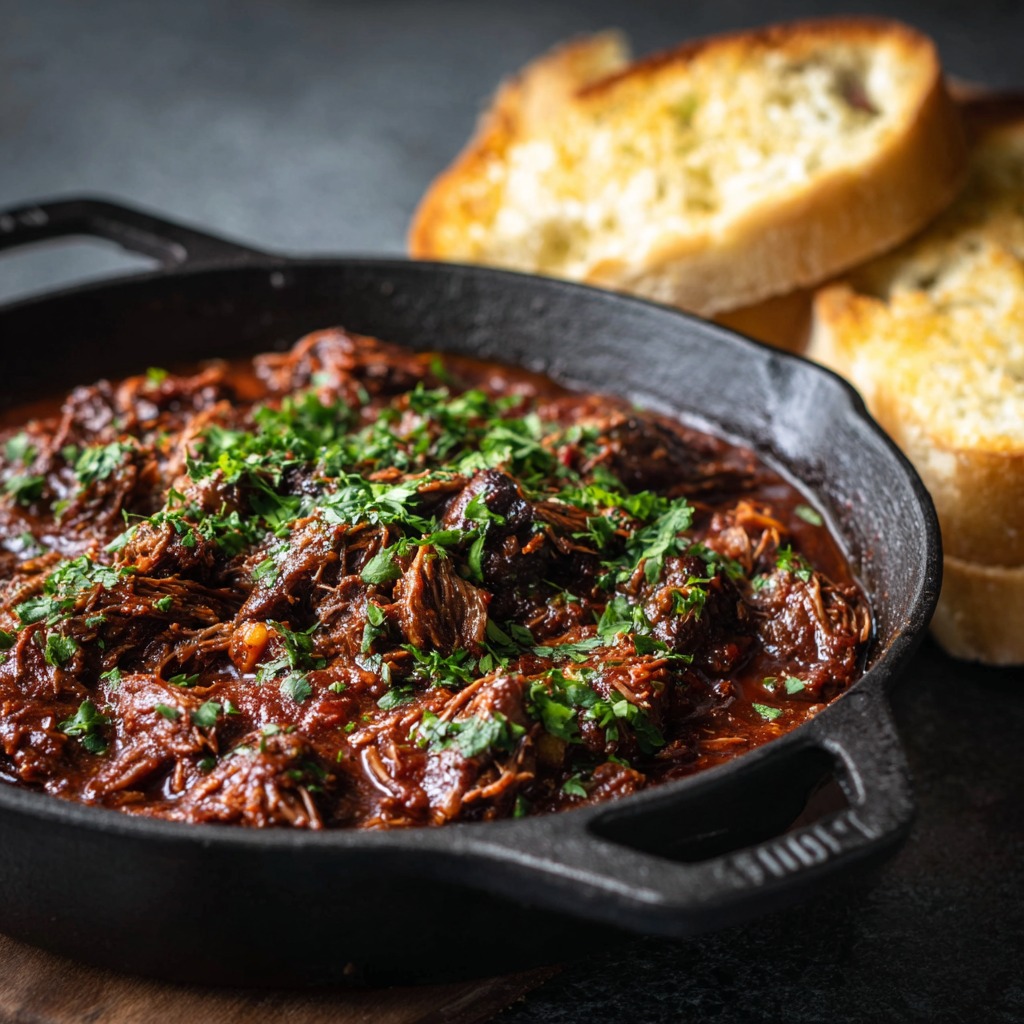
FAQs: Bison in Wild Boar Ragu Recipe
Frequently Asked Questions (FAQs)
What are Hocus Pocus Buns?
Hocus Pocus Buns are sweet treats made by wrapping marshmallows in crescent roll dough, dusted with cinnamon sugar, and baked until golden and gooey inside.
Can I use flavored marshmallows?
Yes! Flavored marshmallows like pumpkin spice or caramel add a delicious twist to this recipe.
How do I store leftover Hocus Pocus Buns?
Store them in an airtight container at room temperature for up to 2 days, or refrigerate for up to 4 days. They can also be frozen for up to 1 month.
Can I make these buns vegan?
Yes, by using vegan crescent dough, dairy-free butter alternatives, and vegan marshmallows, you can make a vegan version.

